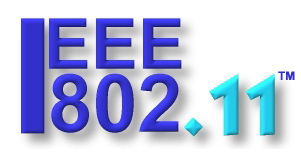802.11n- A case of "Finding MIMO?"


Behold the futurists among us, for they have hope.
They see a world where the IEEE 802.11n standard is ingrained in all portable communications devices, and allows "Warp Factor 5 Mr. Sulu" communications.
Well, maybe not Warp Factor 5, but 540 MB a second- more than 100 times faster than 802.11b and 10 times faster than g.
Yea, but when?
There are products out there referred to as 802.11n, but they aren't quite there yet. In fact, three weeks ago, the first 802.11n routers were placed into the pipeline by Linksys, Netgear, Buffalo Technology, Belkin, and D-link. But the fastest they can go is 300 Mbps- and that with networking, equipment and hardware infrastructure not quite ready to handle such speeds on a stupendously consistent basis.
The IEEE loves consistency, which is why the IEEE 802.11n task force has been pushing for technical standards that would bring a sense of order to this great leap forward.
Earlier this week the IEEE 11n task force failed to move forward on the initial 11n Draft 1.0 document it had approved in March with an 87% majority vote. But this week's vote didn't even get a simple majority. We're talkin' 46%.
Part of the problem is buggy pre-alphas of products based on rival builds of these 802.11n chips. That's according to NetworkWorld.com's John Cox.
"But the first products based on these early rival chips are being received with tepid reviews," he writes. A benchmark test of five MIMO (Multiple Input-Multiple Output) products in a rented home, performed by wireless consultancy The Farpoint Group, Ashland, Mass., found that the Airgo-based Linksys SRX400 access point delivered higher throughput over longer distances than four other products, one using Marvell silicon, the other three (including another Linksys product) using Broadcom."
Cox adds that according to The Farpoint Group principal Craig Mathias, interoperability among the various brands of access points and client cards was also a letdown. "In no case could we get any heterogeneous combination of the 'draft compliant' clients and [wireless] routers to connect at more than typical 11g (20-24Mbps) rates," Cox notes that Mathias wrote in the test report.
Well it is back to the lab, folks...